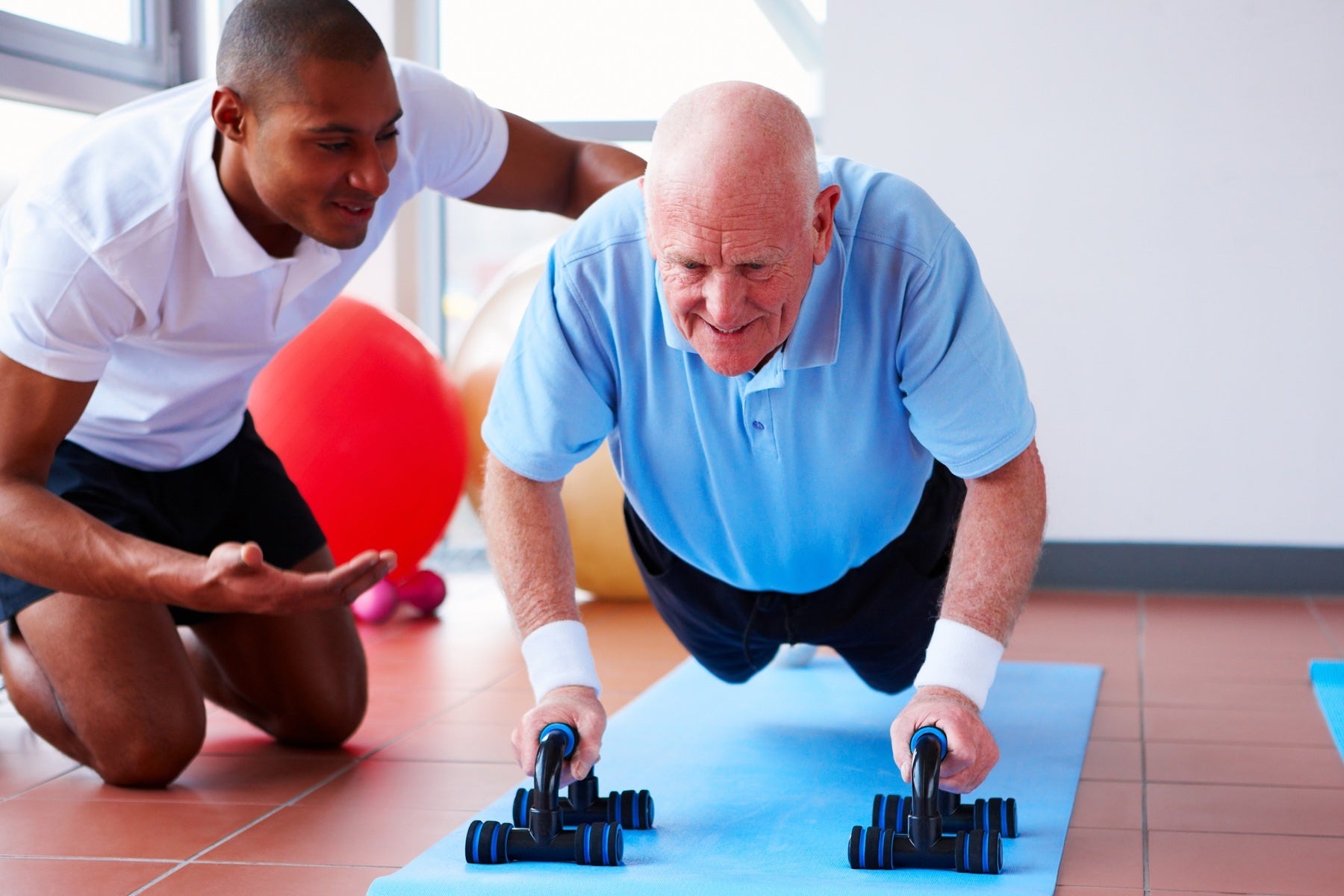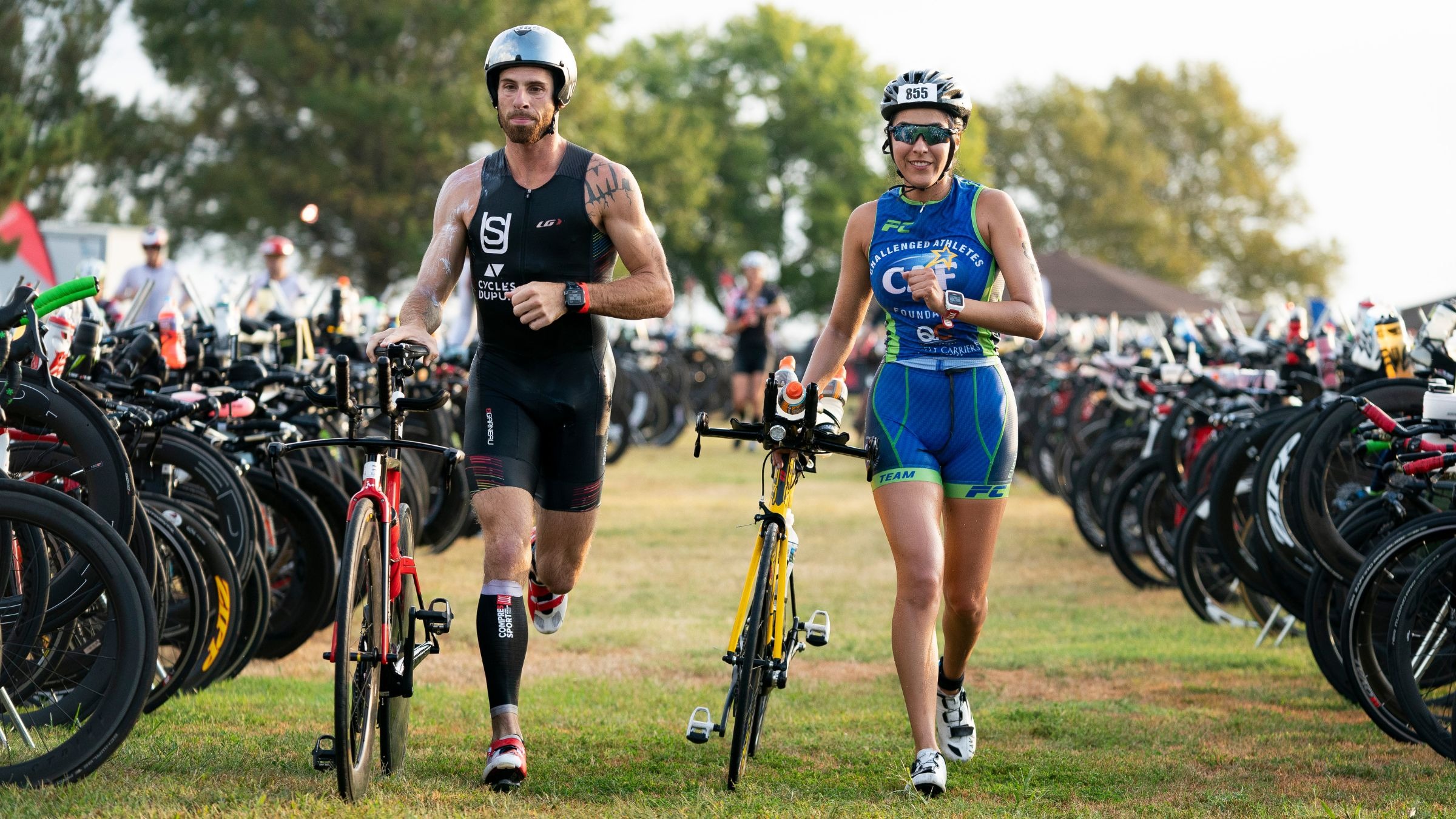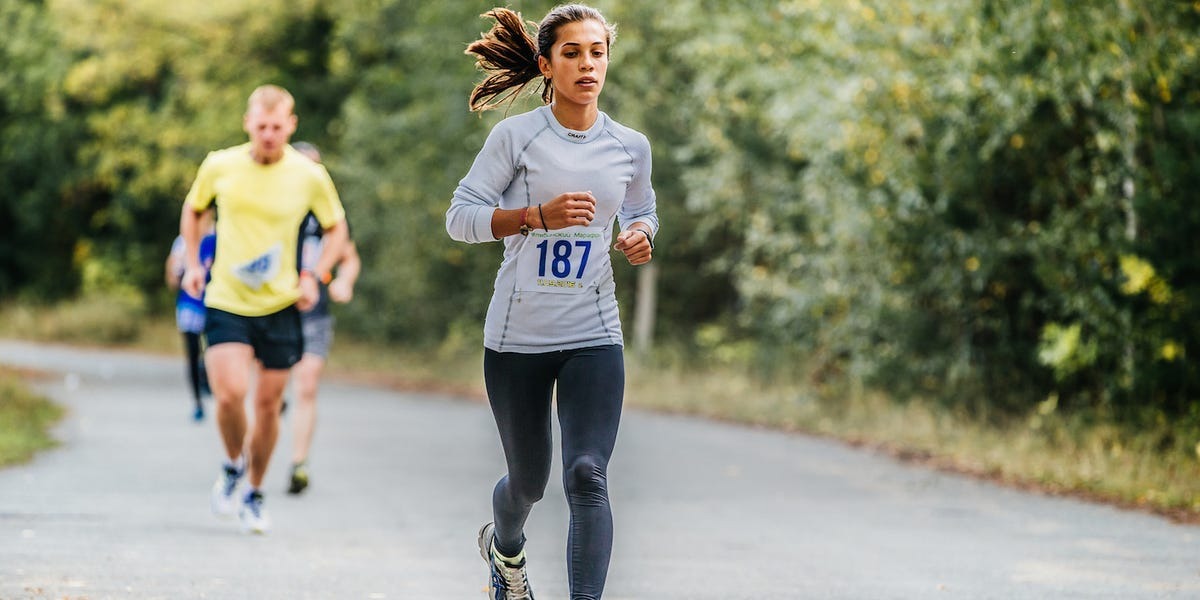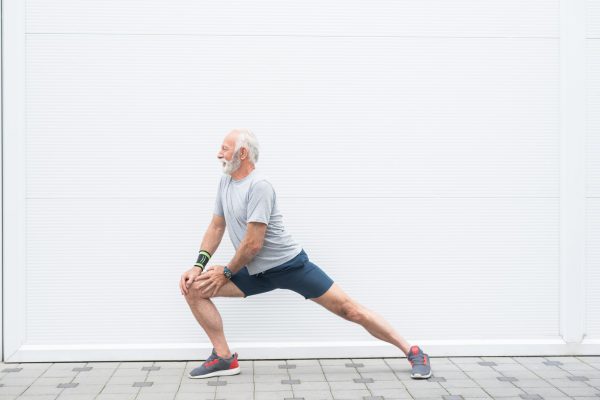

Featured
How To Increase Stamina In Old Age
Published: October 15, 2023
Boost your stamina and energy levels with our featured tips and exercises specifically designed for the elderly. Discover how to increase your endurance and enjoy an active and fulfilling old age.
Introduction
As we age, it becomes increasingly important to prioritize our physical health, including maintaining and increasing our stamina. Stamina, often defined as the ability to sustain prolonged physical or mental effort, plays a crucial role in our overall well-being, especially in old age. It impacts our ability to perform daily activities, enjoy hobbies, and maintain an active lifestyle. Moreover, having good stamina can also contribute to better mental clarity, improved mood, and enhanced quality of life.
In old age, our bodies undergo various physiological changes that can affect our stamina levels. Factors such as decreased muscle mass, hormonal changes, reduced cardiovascular capacity, and age-related conditions can lead to decreased stamina. However, the good news is that with the right lifestyle choices and habits, it is possible to increase stamina and maintain an active and fulfilling life well into old age.
In this article, we will explore the importance of stamina in old age, the factors that can affect it, and provide some practical tips on how to increase stamina. By following these tips, you can improve your overall fitness and enjoy a higher level of energy and vitality in your golden years.
Importance of Stamina in Old Age
Stamina plays a vital role in maintaining an active and independent lifestyle in old age. It is the key to performing daily tasks, such as walking, climbing stairs, carrying groceries, or even playing with grandchildren, without getting easily fatigued. By focusing on increasing stamina, older adults can improve their physical capabilities and enhance their overall quality of life.
Another important aspect of stamina in old age is its impact on cardiovascular health. Physical activities that require stamina, such as walking, jogging, or cycling, promote a healthy heart and improve blood circulation. This helps in reducing the risk of heart diseases, high blood pressure, and other cardiovascular conditions commonly associated with aging.
Additionally, stamina has a significant impact on mental well-being. Engaging in regular physical exercise to increase stamina releases endorphins, also known as “feel-good” hormones, which can effectively combat stress, anxiety, and depression. These exercise-induced endorphins contribute to improved mood and mental clarity, helping older adults maintain a positive outlook on life.
Moreover, having good stamina in old age can also enhance cognitive function. Studies have shown that regular physical activity, which boosts stamina, is associated with better memory, attention, and overall cognitive performance. By increasing stamina through exercise, older adults can promote brain health and potentially reduce the risk of age-related cognitive decline.
Lastly, stamina is closely linked to longevity. The ability to engage in physical activities and maintain an active lifestyle in old age is associated with a lower risk of chronic diseases and increased life expectancy. By focusing on building stamina, older adults can increase their chances of a healthier and more fulfilling life, even in their senior years.
Factors Affecting Stamina in Old Age
Several factors can affect stamina levels in old age and understanding these factors is crucial when trying to improve and maintain stamina. Here are some key factors to consider:
- Muscle Mass and Strength: As we age, there is a natural decline in muscle mass and strength, known as sarcopenia. This can lead to reduced stamina and physical capabilities. Regular exercise, particularly strength training, can help preserve muscle mass and improve stamina.
- Cardiovascular Health: The health of our heart and lungs plays a significant role in stamina. Reduced cardiovascular capacity in old age can result in decreased stamina. Engaging in aerobic exercises, such as walking, swimming, or cycling, can improve cardiovascular health and boost stamina.
- Hormonal Changes: Hormonal changes, particularly in women during menopause, can impact stamina levels. Fluctuations in estrogen levels can lead to increased fatigue. Maintaining a balanced hormone level through proper nutrition and seeking medical advice if necessary can help alleviate this issue.
- Chronic Conditions: Age-related chronic conditions, such as arthritis, diabetes, or heart disease, can contribute to decreased stamina. Proper management of these conditions and adherence to medical advice is essential to maintain and improve stamina.
- Physical Inactivity: Leading a sedentary lifestyle can lead to decreased stamina over time. Lack of regular exercise and physical activity can negatively impact stamina. Incorporating a variety of physical activities into daily routine is essential for maintaining and improving stamina.
- Nutrition: Poor nutrition can also affect stamina levels. A well-balanced diet rich in nutrients, including protein, carbohydrates, and healthy fats, is important to fuel the body and maintain stamina.
- Mental and Emotional Well-being: Mental and emotional factors, such as stress, anxiety, and depression, can have a significant impact on stamina. Practicing stress management techniques, seeking support, and engaging in activities that promote mental well-being can contribute to improved stamina.
Understanding these factors that can affect stamina allows older adults to take proactive steps towards improving their stamina levels and maintaining an active lifestyle.
Tips to Increase Stamina in Old Age
Building stamina in old age is possible with the right approach and lifestyle choices. Here are some practical tips to help you increase your stamina:
- Regular Exercise: Engage in aerobic exercises like walking, swimming, or cycling to improve cardiovascular health and stamina. Aim for at least 150 minutes of moderate-intensity exercise per week.
- Balanced Diet: Eat a well-balanced diet consisting of lean proteins, whole grains, fruits, and vegetables to provide essential nutrients and fuel for your body’s energy needs.
- Adequate Hydration: Drink plenty of water throughout the day to stay hydrated. Dehydration can lead to decreased stamina and fatigue.
- Sufficient Rest and Sleep: Get enough rest and quality sleep to allow your body to recover and rejuvenate. Aim for 7-9 hours of sleep per night.
- Stress Management: Practice stress management techniques, such as meditation, deep breathing exercises, or engaging in hobbies, to reduce stress and improve overall well-being.
- Cardiovascular Activities: Incorporate activities that challenge your cardiovascular system, such as interval training or high-intensity workouts, to improve stamina and endurance.
- Strength Training: Include resistance exercises to build muscle strength and improve overall stamina. Work with a fitness professional to develop a safe and effective strength training program.
- Flexibility and Balance Exercises: Maintain flexibility and improve balance through activities like yoga or tai chi. This can help enhance overall physical performance and reduce the risk of falls.
- Avoiding Sedentary Lifestyle: Limit prolonged periods of sitting and aim to incorporate more movement throughout your day. Take short walks, stretch, or engage in light activities every hour.
- Social Engagement: Stay socially active by participating in group activities or joining clubs. Social engagement can provide motivation and support for maintaining an active lifestyle.
Remember to consult with your healthcare provider before starting any new exercise or dietary regimen, especially if you have any pre-existing medical conditions.
Increasing stamina in old age requires consistency, dedication, and a positive mindset. By incorporating these tips into your daily routine, you can gradually improve your stamina and enjoy an active and fulfilling life.
Regular Exercise
Regular exercise is paramount when it comes to increasing stamina in old age. Engaging in physical activities not only boosts cardiovascular health but also helps in building endurance and improving overall stamina. Here are some important points to consider when incorporating regular exercise into your routine:
- Choose Activities You Enjoy: Find activities that you genuinely enjoy doing. Whether it’s walking, swimming, dancing, or playing a sport, selecting activities that you find fun and enjoyable will make it easier to stick to a regular exercise routine.
- Start with Low-Impact Activities: If you’re new to exercise or have physical limitations, start with low-impact activities that are gentle on the joints, such as walking or water aerobics. As your stamina improves, you can gradually increase the intensity or try more challenging exercises.
- Focus on Aerobic Exercises: Aerobic exercises, such as brisk walking, jogging, cycling, or swimming, are excellent for improving cardiovascular health and increasing stamina. Aim for at least 30 minutes of moderate-intensity aerobic exercise most days of the week.
- Incorporate Interval Training: Interval training involves alternating between periods of high-intensity exercise and short recovery periods. It is an effective way to boost stamina and increase endurance. For example, you can alternate between walking and jogging during your regular walks.
- Gradually Increase Intensity and Duration: Start with shorter exercise sessions and gradually increase the duration and intensity as your stamina improves. Listen to your body and don’t push yourself too hard too quickly.
- Mix Cardiovascular and Strength Training: Incorporating strength training exercises into your routine can help build muscle strength and improve overall stamina. Include exercises that target major muscle groups, such as squats, lunges, push-ups, and bicep curls, at least two days a week.
- Stay Consistent: Consistency is key when it comes to reaping the benefits of regular exercise. Aim to exercise most days of the week and make it a part of your daily routine.
Remember to warm up before each exercise session and cool down afterward to prevent injuries and muscle soreness. If you have any underlying health conditions or concerns, consult with your healthcare provider before starting any new exercise program.
Regular exercise not only helps increase stamina but also has numerous other health benefits, including improved mood, reduced risk of chronic diseases, and enhanced overall well-being. Make it a priority to incorporate regular exercise into your life to boost your stamina and enjoy the countless benefits it brings.
Balanced Diet
Maintaining a balanced diet is essential for increasing stamina in old age. The food we consume directly affects our energy levels, physical performance, and overall well-being. Here are some key considerations for maintaining a balanced diet to enhance stamina:
- Eat a Variety of Nutrient-Dense Foods: Aim to include a wide variety of fruits, vegetables, whole grains, lean proteins, and healthy fats in your diet. These foods provide essential nutrients that fuel your body and support overall stamina.
- Stay Hydrated: Dehydration can lead to fatigue and decreased stamina. Drink plenty of water throughout the day to stay properly hydrated. Herbal teas and hydrating foods, such as fruits and vegetables, can also contribute to your fluid intake.
- Include Complex Carbohydrates: Complex carbohydrates, such as whole grains, legumes, and starchy vegetables, provide a steady release of energy and help sustain stamina. Opt for whole wheat bread, brown rice, quinoa, and sweet potatoes over processed carbohydrates.
- Consume Adequate Protein: Protein is essential for muscle repair and growth, which is critical for stamina. Include lean sources of protein, such as chicken, fish, eggs, tofu, and legumes, in your meals and snacks.
- Don’t Forget Healthy Fats: Healthy fats, including avocados, nuts, seeds, and olive oil, provide a concentrated source of energy and support heart health. Incorporate these fats into your diet in moderation.
- Avoid Excessive Sugars and Processed Foods: High sugar and processed foods can lead to energy crashes and decreased stamina. Limit your intake of sugary beverages, snacks, and processed foods that offer little nutritional value.
- Consider Supplements: If you struggle to meet your nutritional needs through diet alone, speak with your healthcare provider about supplements that can support stamina, such as B-vitamins, iron, and omega-3 fatty acids.
It’s important to note that maintaining a balanced diet is a lifelong commitment. Make small, sustainable changes to your eating habits and focus on long-term consistency. Also, consider working with a registered dietitian who specializes in older adult nutrition to create a personalized diet plan that suits your needs and goals.
By providing your body with the necessary nutrients and energy from a balanced diet, you can support your stamina, improve your overall health, and enhance your ability to engage in physical activities with vitality and endurance.
Adequate Hydration
Staying adequately hydrated is essential for increasing stamina in old age. Water is crucial for maintaining bodily functions and plays a vital role in supporting energy levels and overall physical performance. Here are some key points to consider when it comes to hydration and stamina:
- Drink Plenty of Water: Water is the best choice to maintain hydration levels. Aim to drink at least 8-10 glasses of water throughout the day, or more if you engage in intense physical activities or live in a hot climate.
- Monitor urine color: The color of your urine can be a good indicator of your hydration status. A pale yellow color indicates good hydration, while dark yellow urine may indicate dehydration.
- Stay Ahead of Thirst: Don’t wait until you feel thirsty to drink water. Thirst is a sign that your body is already dehydrated. Sip on water regularly throughout the day to maintain hydration levels.
- Hydrate before, during, and after exercise: When engaging in physical activities, it”s important to drink water before, during, and after the exercise to replace lost fluids and maintain stamina. Sip on water during breaks or use a sports drink containing electrolytes for intense or prolonged workouts.
- Include Hydrating Foods: In addition to drinking water, include hydrating foods in your diet. Fruits and vegetables with a high water content, such as watermelon, cucumber, oranges, and strawberries, can contribute to your overall hydration.
- Limit Caffeine and Alcohol intake: Caffeine and alcohol can contribute to dehydration, so it’s important to consume them in moderation. If you do consume caffeinated or alcoholic beverages, drink extra water to offset their dehydrating effects.
- Consider Electrolyte Replacement: During intense or prolonged exercise or if you sweat excessively, consider replenishing electrolytes lost through sweat. Electrolyte drinks or supplements can help maintain proper hydration levels and support stamina.
Adequate hydration is not only essential for maintaining stamina but also for supporting overall health and well-being. Dehydration can lead to fatigue, dizziness, and decreased physical performance. By prioritizing hydration and ensuring you consume enough water and hydrating foods, you can support optimal stamina and enhance your ability to engage in physical activities with energy and endurance.
Sufficient Rest and Sleep
Sufficient rest and sleep are essential for increasing stamina in old age. Your body needs time to recover and recharge in order to maintain optimal physical and mental performance. Here are some important considerations regarding rest and sleep for enhancing stamina:
- Prioritize Sleep: Aim for 7-9 hours of quality sleep each night. Create a relaxing bedtime routine to signal to your body that it’s time to wind down and prepare for sleep.
- Create a Comfortable Sleep Environment: Make sure your bedroom is quiet, dark, and at a comfortable temperature. Invest in a supportive mattress and pillows to ensure optimal sleep quality.
- Maintain a Consistent Sleep Schedule: Try to go to bed and wake up at the same time every day, even on weekends. This helps regulate your body’s internal clock and promotes better sleep quality.
- Limit Caffeine and Alcohol: Avoid consuming caffeine or alcohol close to bedtime, as they can interfere with sleep quality. Caffeine is a stimulant and can keep you awake, while alcohol can disrupt the sleep cycle.
- Avoid Electronics before Bed: The blue light emitted by electronic devices can interfere with your sleep. Try to limit screen time before bed by avoiding electronic devices or using blue light filters.
- Practice Relaxation Techniques: Engage in relaxing activities before bed, such as reading a book, taking a warm bath, or practicing deep breathing exercises. These activities can help calm your mind and prepare your body for sleep.
- Take Short Rest Breaks: Incorporate short rest breaks throughout the day to give your body and mind a chance to recover and recharge. Avoid pushing yourself to the point of exhaustion, as this can lead to decreased stamina.
It’s important to prioritize rest and sleep as part of your stamina-building routine. Adequate rest allows your body to repair and rebuild muscle tissues, conserve energy, and improve overall mental clarity. By ensuring you get enough quality rest and sleep, you can optimize your stamina levels and perform daily activities with greater vigor and endurance.
Stress Management
Stress can have a significant impact on stamina and overall well-being, especially in old age. Managing stress levels is crucial for maintaining and increasing stamina. Here are some strategies to effectively manage stress:
- Identify Stress Triggers: Take note of situations or factors that contribute to your stress levels. By identifying your stress triggers, you can better manage and minimize their impact on your stamina.
- Practice Deep Breathing and Relaxation Techniques: Deep breathing exercises, meditation, and mindfulness can help calm your mind and reduce stress. Incorporate these practices into your daily routine to promote relaxation and overall well-being.
- Engage in Regular Physical Activity: Exercise is not only beneficial for improving stamina but also for managing stress. Physical activity releases endorphins, which are natural mood enhancers and stress reducers.
- Create a Supportive Network: Surround yourself with a supportive network of family and friends who can offer encouragement, guidance, and a listening ear. Social support is crucial for managing stress and boosting resilience.
- Set Realistic Goals and Prioritize: Overcommitting and setting unrealistic expectations can lead to increased stress and a decline in stamina. Set manageable goals and learn to prioritize tasks to prevent unnecessary stress.
- Practice Time Management: Poor time management can contribute to stress and drain your energy. Use effective time management techniques, such as creating to-do lists, prioritizing tasks, and delegating when necessary.
- Engage in Stress-Relieving Activities: Find activities that help you relax and unwind, such as listening to music, reading, gardening, or practicing a hobby. Engaging in activities you enjoy can reduce stress and rejuvenate your stamina.
- Seek Professional Help if Needed: If stress becomes overwhelming and affects your daily life, consider seeking professional help. A therapist or counselor can provide guidance and techniques to manage stress effectively.
Stress is a normal part of life, but chronic stress can significantly impact your stamina and overall well-being. By implementing stress management strategies, you can reduce the negative effects of stress, improve your stamina, and maintain a balanced and fulfilling lifestyle.
Cardiovascular Activities
Cardiovascular activities play a crucial role in improving stamina in old age. These exercises elevate heart rate, strengthen the cardiovascular system, and increase endurance. Here are some important points to consider when incorporating cardiovascular activities into your routine:
- Choose Activities You Enjoy: Engage in cardiovascular exercises that you find enjoyable. This increases the likelihood of sticking to a regular exercise routine. Walking, jogging, swimming, dancing, cycling, and aerobics are all excellent options.
- Start Slowly and Progress Gradually: If you’re new to cardiovascular activities or haven’t exercised for a while, start with low-intensity workouts and gradually increase the duration and intensity over time. This helps prevent injury and allows your body to adapt.
- Aim for Moderate-Intensity Exercise: Engage in exercises that increase your heart rate and breathing, but still allow you to carry on a conversation. This moderate intensity helps improve cardiovascular fitness and stamina.
- Make it a Routine: Aim for at least 150 minutes of moderate-intensity aerobic exercise per week, spread over several sessions. Incorporate cardiovascular activities into your weekly routine to improve stamina consistently.
- Mix Up Your Workouts: To prevent boredom and challenge your body, vary your cardiovascular activities. Alternate between different exercises or try new classes or workouts to keep things interesting.
- Include Interval Training: Interval training involves alternating between periods of high-intensity exercise and short recovery periods. This type of training improves cardiovascular fitness and increases stamina more rapidly.
- Monitor Your Heart Rate: Use a fitness tracker or monitor your heart rate during exercise to ensure you’re staying within your target heart rate zone. This helps maximize the effectiveness of your workouts and ensures you’re working at an appropriate intensity.
- Listen to Your Body: Pay attention to how your body feels during exercise. If you experience any pain, dizziness, or shortness of breath, slow down or stop and seek medical advice if necessary.
Incorporating cardiovascular activities into your routine enhances cardiovascular health, increases stamina, and improves overall well-being. It is important to consult with your healthcare provider before starting a new exercise program, especially if you have any underlying health conditions.
By engaging in regular cardiovascular activities, you can boost your stamina, increase your endurance, and have the energy and vitality to enjoy an active and fulfilling life in your senior years.
Strength Training
Strength training is a crucial component of increasing stamina in old age. By building muscle strength, you can improve overall endurance and support your body’s ability to perform daily activities. Here are some important points to consider when incorporating strength training into your routine:
- Start with Proper Form and Technique: When starting strength training, it’s essential to learn the proper form and technique for each exercise. This helps prevent injuries and ensures that you target the right muscles.
- Include a Variety of Exercises: Incorporate exercises that target major muscle groups, such as squats, lunges, push-ups, bicep curls, and shoulder presses. Aim to work all major muscle groups at least two days a week.
- Progress Gradually: Start with lighter weights and gradually increase the resistance as you gain strength. This progressive overload helps challenge your muscles and improve stamina.
- Use Proper Breathing Techniques: Proper breathing during strength training helps maintain stability and support muscle contraction. Inhale during the eccentric (lowering) phase and exhale during the concentric (lifting) phase of each exercise.
- Allow for Adequate Rest and Recovery: Give your muscles time to recover between strength training sessions. Aim for at least 48 hours of rest for each muscle group before working them again.
- Consider Resistance Bands or Bodyweight Exercises: If free weights or weight machines are not accessible, consider using resistance bands or performing bodyweight exercises. These options can still provide an effective strength training workout.
- Work with a Fitness Professional: If you’re new to strength training or have specific concerns, consider working with a fitness professional, such as a personal trainer or physical therapist. They can guide you through proper techniques and help tailor a program to your needs.
Strength training not only helps increase muscle strength but also improves bone density, enhances posture, and supports overall stamina. Remember to always warm up before strength training, start with lighter weights, and progress gradually to maximize the benefits while minimizing the risk of injury.
By incorporating strength training into your fitness routine, you can increase your stamina, maintain independence, and enjoy a higher quality of life in your golden years.
Flexibility and Balance Exercises
Flexibility and balance exercises are essential for increasing stamina in old age. These types of exercises improve range of motion, enhance muscle flexibility, and promote stability and coordination. Here are some important points to consider when incorporating flexibility and balance exercises into your routine:
- Stretching: Incorporate gentle stretching exercises to improve flexibility. Focus on major muscle groups, such as the legs, shoulders, and back. Hold each stretch for 15-30 seconds and avoid bouncing or overstretching.
- Yoga and Pilates: Participate in yoga or Pilates classes that focus on improving flexibility, core strength, and balance. These practices also promote relaxation and can help reduce stress.
- Balance Exercises: Perform exercises that challenge your balance, such as standing on one foot, heel-to-toe walking, or balancing on a stability ball. Start with support if needed and gradually progress to more challenging exercises as your balance improves.
- Tai Chi: Consider practicing tai chi, a gentle martial art that emphasizes slow, controlled movements and balance. Tai chi improves strength, flexibility, and posture while promoting relaxation and mental well-being.
- Use Props or Aids: If you have difficulty with balance, use stability aids like a chair, wall, or balance board to provide support and help improve stability. Gradually reduce reliance on aids as your balance improves.
- Take Safety Precautions: When performing balance exercises, ensure you have a stable and clear space to work in. Use a sturdy surface and have a spotter or support nearby if needed.
- Be Consistent: Like any exercise routine, consistency is key. Aim to incorporate flexibility and balance exercises into your routine at least two to three times a week to experience the benefits.
Flexibility and balance exercises not only improve overall physical performance but also reduce the risk of falls and injuries, which can greatly impact stamina in old age. Regular practice of these exercises can help maintain independence, enhance posture and coordination, and boost overall well-being.
Remember to listen to your body and work within your comfort zone. If you have any underlying health conditions or concerns, consult with your healthcare provider or a qualified fitness professional before starting a new flexibility and balance exercise program.
By incorporating these exercises into your routine, you can enhance your stamina and enjoy improved physical performance and stability in your daily activities.
Avoiding Sedentary Lifestyle
Avoiding a sedentary lifestyle is crucial for increasing stamina in old age. Prolonged periods of sitting or inactivity can lead to decreased muscle strength, reduced cardiovascular health, and overall decline in stamina. Here are some important considerations to help you avoid a sedentary lifestyle:
- Incorporate Movement into Daily Routine: Look for opportunities to be active throughout the day. Take short walks during breaks, use stairs instead of elevators, and stand or pace while on phone calls.
- Set Reminders: Set reminders to get up and move every hour or so. Use phone alarms or fitness trackers to prompt you to break up periods of sitting.
- Engage in Regular Exercise: Make regular exercise a priority in your daily routine. Aim for a combination of cardiovascular exercises, strength training, flexibility, and balance exercises to maintain overall fitness and stamina.
- Find Active Hobbies: Discover hobbies that get you moving. This could include gardening, dancing, swimming, or joining a walking or sports group. Find activities that you enjoy and that keep you physically active.
- Integrate Physical Activity into Socializing: Instead of meeting friends for coffee or meals, consider engaging in active social activities. Go for a walk together, play a sport, or take a dance class as a group.
- Limit Screen Time: Minimize excessive screen time, whether it’s watching TV, browsing the internet, or using smartphones. Set boundaries and allocate dedicated time for physical activity and other non-sedentary pursuits.
- Make Household Chores Active: Turn household chores into opportunities for movement. Clean the house vigorously, engage in gardening and yard work, or try DIY projects that require physical activity.
- Track Your Activity: Use a fitness tracker or pedometer to monitor your daily activity level. Set goals to gradually increase the number of steps you take each day.
- Stay Accountable: Partner up with a friend or family member to stay accountable to your active lifestyle goals. Plan regular activities together and motivate each other to avoid sedentary habits.
Avoiding a sedentary lifestyle is important for maintaining and increasing stamina as you age. By incorporating regular movement and physical activity into your daily routine, you can boost your stamina, improve overall fitness, and enjoy a more active and fulfilling life.
Social Engagement
Social engagement is a key factor in increasing stamina in old age. Maintaining social connections and participating in group activities has numerous benefits for physical and mental well-being. Here are some important considerations for social engagement to enhance stamina:
- Join Social Clubs or Groups: Look for local social clubs or groups that align with your interests. This could include book clubs, hobby groups, or sports teams. Engaging in activities with like-minded individuals can provide motivation and support for maintaining an active lifestyle.
- Participate in Community Events: Stay connected with your community by attending local events, festivals, or volunteer opportunities. These social engagements can provide opportunities for physical activity and interaction with others.
- Connect with Family and Friends: Keep in touch with loved ones regularly, whether it’s through phone calls, video chats, or in-person visits. Engage in activities together that promote physical activity, such as walks or outings to parks or museums.
- Attend Exercise Classes or Group Fitness Sessions: Join exercise classes or group fitness sessions specifically designed for older adults. These can provide a supportive and social environment while improving stamina and overall fitness.
- Participate in Group Outdoor Activities: Engage in group outdoor activities, such as hiking, cycling, or nature walks. These activities not only allow you to socialize but also provide an opportunity to be active in a natural setting.
- Volunteer: Get involved in community service or volunteer work. This not only helps others but also provides a sense of purpose and social interaction, which can positively impact your stamina and overall well-being.
- Attend Senior Centers or Programs: Explore local senior centers or programs that offer a variety of activities for older adults. These centers provide opportunities for socialization, exercise classes, and educational workshops.
- Engage in Intergenerational Activities: Interact with younger generations through activities such as mentoring, tutoring, or participating in intergenerational programs. This connection can provide a sense of energy, purpose, and renewed vitality.
Social engagement has been shown to improve overall well-being, boost mood, reduce stress, and increase longevity. By actively participating in social activities and maintaining meaningful connections, you can enhance your stamina while enjoying the many benefits of social interaction.
Conclusion
Increasing stamina in old age is essential for maintaining an active and fulfilling life. By prioritizing physical, mental, and social well-being, it is possible to enhance stamina and enjoy a higher level of energy and vitality. The key is to adopt a holistic approach that incorporates regular exercise, a balanced diet, adequate hydration, sufficient rest and sleep, stress management techniques, cardiovascular activities, strength training, flexibility and balance exercises, avoiding a sedentary lifestyle, and social engagement.
Engaging in regular exercise, including cardiovascular activities and strength training, improves cardiovascular health, builds muscle strength, and boosts stamina. Eating a balanced diet rich in nutrients helps fuel the body and supports overall stamina. Adequate hydration is crucial for maintaining energy levels and promoting optimal physical performance. Sufficient rest and sleep allow the body to recover and recharge. Implementing stress management techniques helps reduce stress, enhance overall well-being, and support stamina. Incorporating flexibility and balance exercises improves range of motion, stability, and coordination. Avoiding a sedentary lifestyle promotes overall physical activity and prevents a decline in stamina. Lastly, social engagement fosters connections, provides motivation, and enhances mental well-being.
It’s important to remember that enhancing stamina is a gradual process that requires consistency and adaptation. Before making any significant changes to your lifestyle, it’s advisable to consult with your healthcare provider. They can provide guidance based on your specific needs and any underlying health conditions.
By implementing these tips and adopting a comprehensive approach, you can increase your stamina, maintain independence, and enjoy a vibrant and active life well into old age. Embrace the journey of building stamina, and embrace the numerous physical and mental benefits that come with it.








